Yesterday the day started with a stop at the Montfrague Nature Park visitor centre. It seems to have been built recently at great expense, at least partly with EU funding, but although it looks as if it is very informative, its all in Spanish. This is Spain so fair enough, but I was disappointed to be unable to find out more information about the park and the wildlife.
One thing that was in English was a bit about the Cork Oaks. Apparently this part of Spain and into Portugal the planting of Cork Oaks started 300 years or so ago. In with the Cork Oaks are planted Holm Oaks. The areas in between and under the oaks are grazed by cows and sheep and the acorns from the Holm Oaks are fed to pigs, which are then slaughtered and turned into Spain’s most expensive Jamon. So what looks like a fairly arid landscape actually hides a productive and ancient farming system.
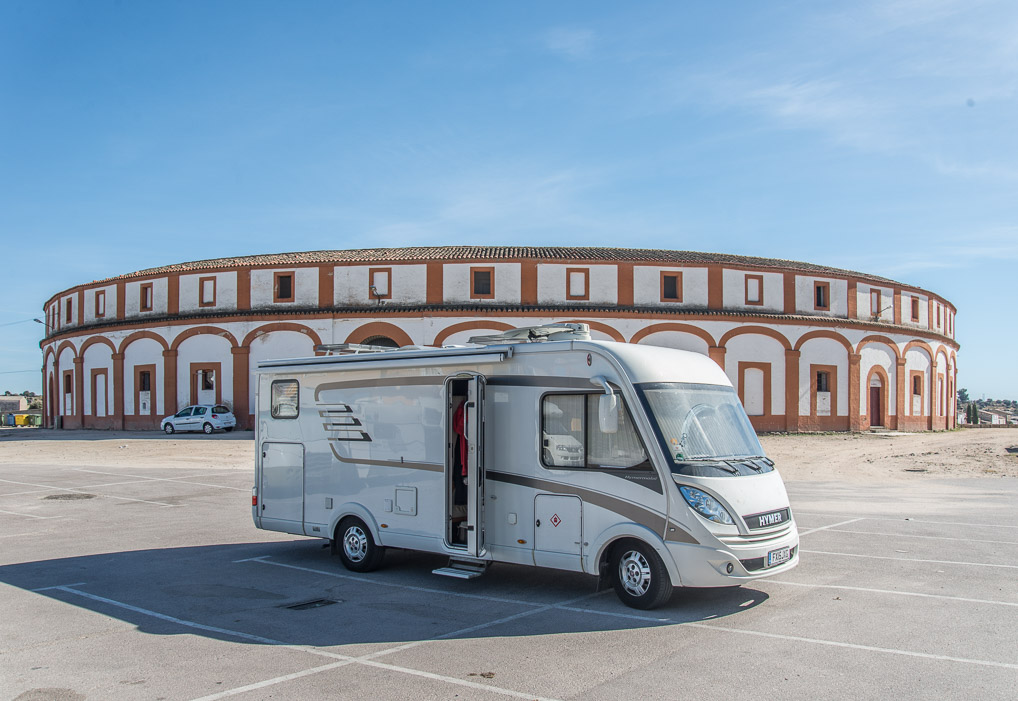
Basil looking proud at the Bullring. Tommy Steel’s “Little White Bull” springs to mind.
Our target for the day was Trujillo, just voted in El Pais as Spains 5thmost beautiful town. Staunch animal rights advocate Sarah was not best pleased to find that the town’s aire was on the car park for the local Bull Ring (39.4576, -5.87275 Free but with only black water dump – plans are in hand to provide full services). Displeasure turned to anger when a sign on the Bull Ring made clear that EU funding had been allocated to renovate the stadium!
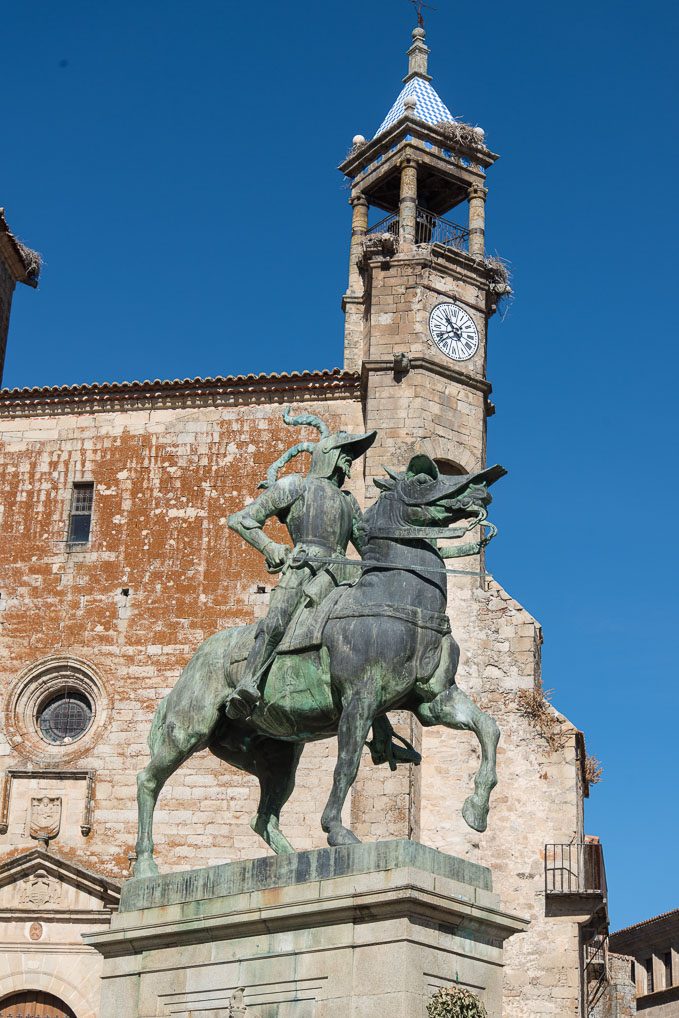
Senor Pizarro
Trujillo is famous as the home of Francisco Pizarro one of the Conquistadors who ravaged South and Central America. Senor Pizarro’s claim to fame was the conquest of Peru and the near destruction of the Inca people. The wealth he earned made his home town and his relatives extremely rich. When I asked at the Tourist Information office whether Spaniards are still proud of and taught about Pizarro, she unashamedly admitted they were. This is just a snapshot, but perhaps the Spanish are lagging behind the British in being circumspect regarding some aspects of our imperialism.

Plaza Major
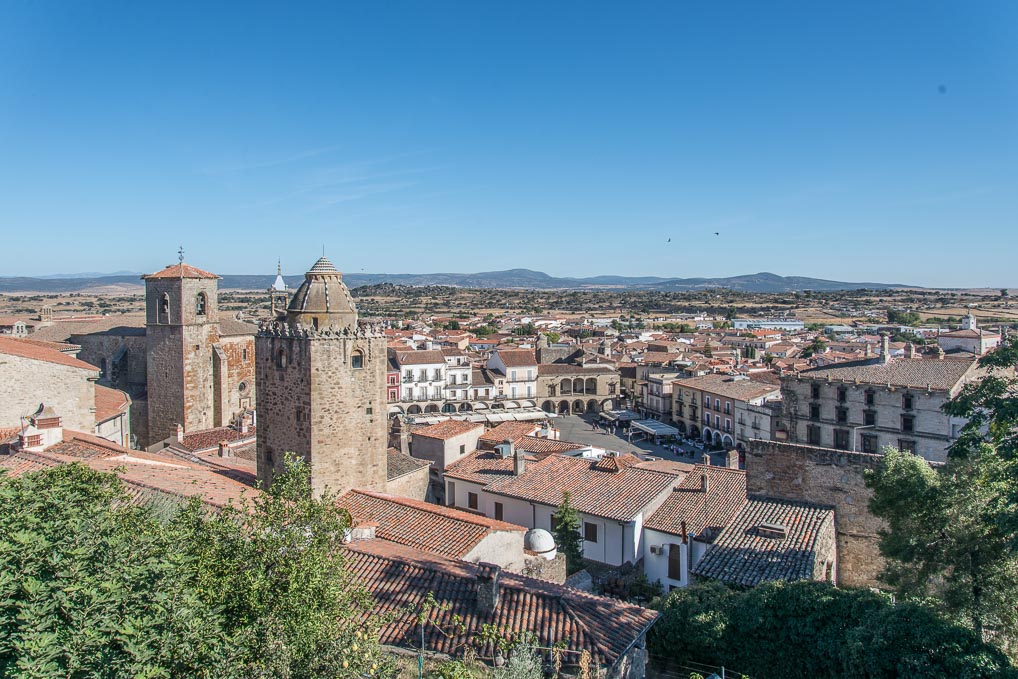
Plaza Major from the Castle
Regular readers will know that on this trip we have looked round many pretty old towns, but to date Trujillo tops them all. The old town is virtually unchanged from the 16thcentury, with lovely old churches, convents, houses and what Rough Guide describes as the escutcheoned mansions of the Conquistadors. I must admit that I had to look up “escutcheon” and it is a heraldic symbol fixed the exterior of a house. Once that was clear I can confirm that Trujillo is full of beautiful escutcheoned mansions!
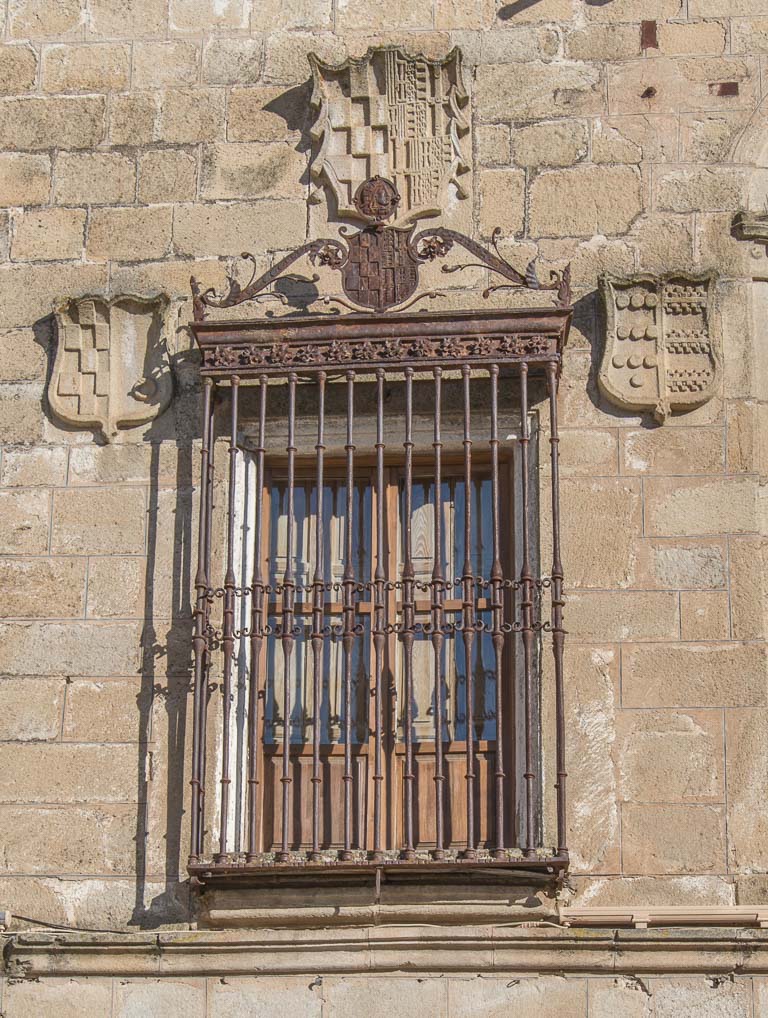
Escutcheons!
If you can stand the heat of the spring and summer months, Trujillo’s storks must be an amazing sight. Nearly every building and tower is covered with one or more storks’ nests, which are now of course empty as the storks have returned to overwinter in Africa.

Trujillo
Like most of these towns, Trujillo grew up around a castle, originally built by the Moors. The cobbled streets wend their way slowly up hill, until you eventually reach the high point and the castle, which affords magnificent views over the old town’s roofs. The castle is still entered through a moorish doorway.
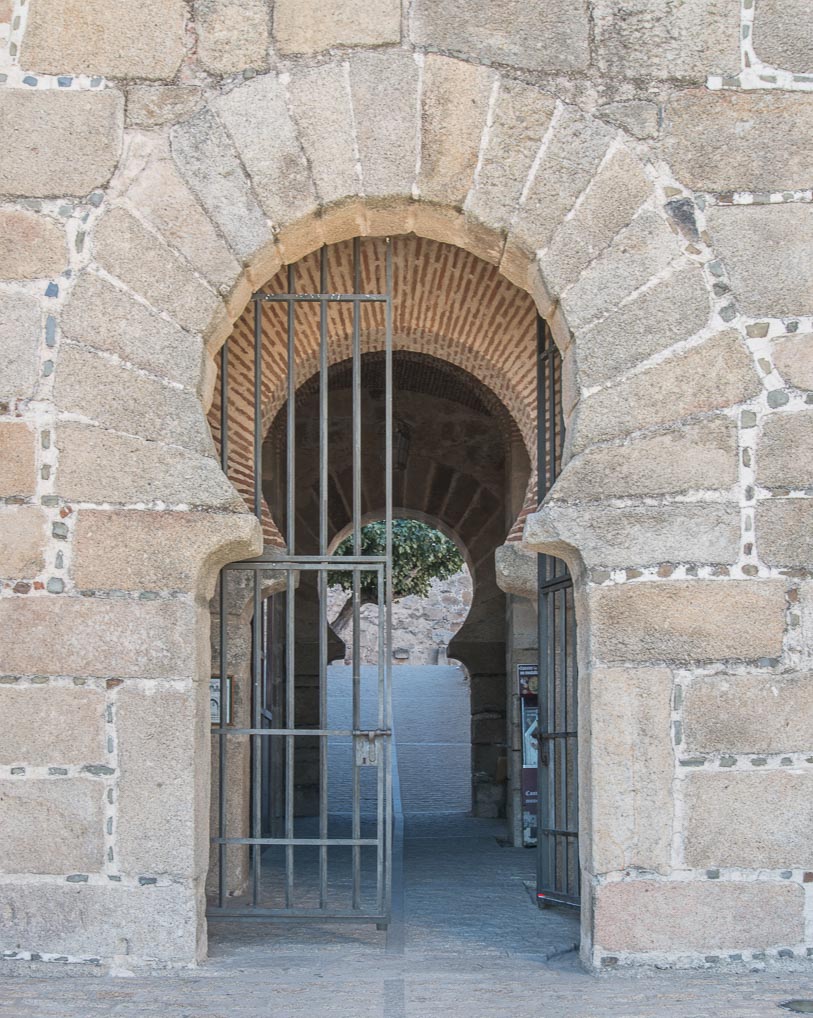
Moorish door of the day
Trujillo is another must see for anyone travelling in this part of Spain.

Street scene
Today we have driven a short distance, via LIDL, to Caceres another town whose wealth is based on the Conquistadors. We have parked up in another free aire (39.480414, -6.366525) and are currently waiting for siesta to finish before venturing into the town.
